

Nymphenburg
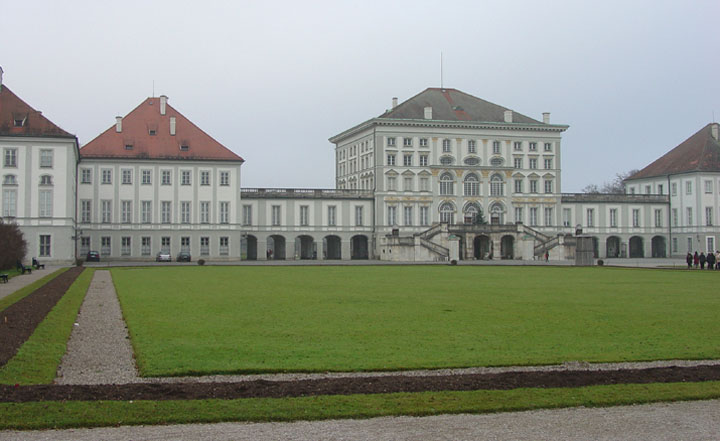
Schloss Nymphenburg
This picture-perfect Baroque palace was built from 1664 to 1758 as the royal
family's summer residence. And what an over-the-top escapist fantasy it is.
There's a two-storey dining hall decorated with fabulous frescoes, a room
stuffed with Gobelin tapestries, a Heraldic Room, Chinese Lacquer Room and the
Gallery of Beauties, lined with portraits of 38 local stunners who'd caught
Ludwig I's eye (including a smoldering depiction of Lola Montez).
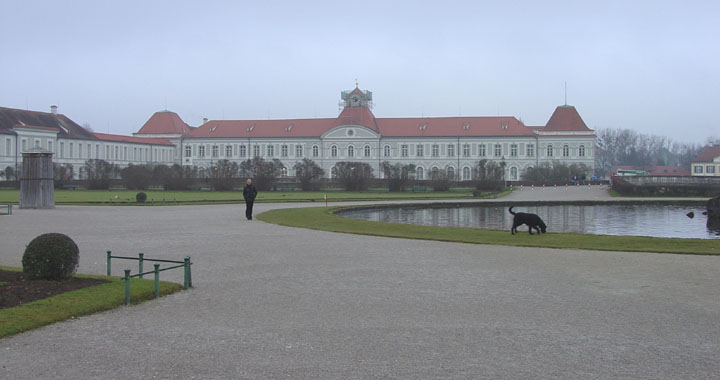
side wing
The Royal Stables feature Ludwig II's unused wedding coach (the engagement faultered), and the Porcelain Museum is housed in the former Nymphenburg Porcelain factory. An English-style park surrounds the palace, highlighted by a central canal, various follies, a crystal and gilt-bedripped hunting lodge, Chinese teahouse, bathing house, witch's cottage, tropical greenhouses and a natural history museum.
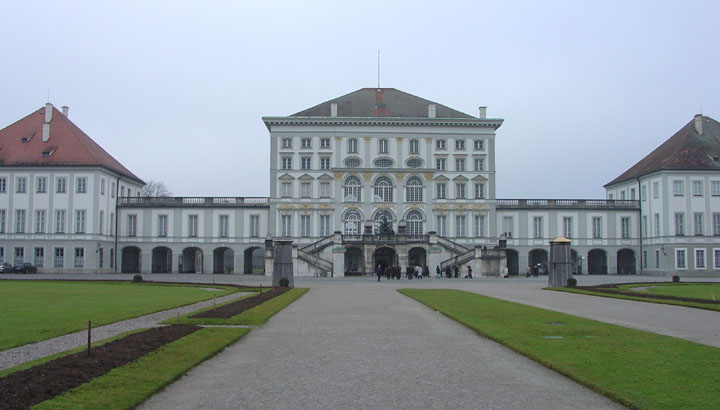
Nymphenburg palace, formerly the summer residence outside Munich of the Wittelsbachs, the former ruling family of Bavaria. The late Baroque structure was begun in 1664 by the Prince Elector Maximilian II Emanuel. It was enlarged and annexes were built through the reign of Maximilian III Joseph (1745–77).
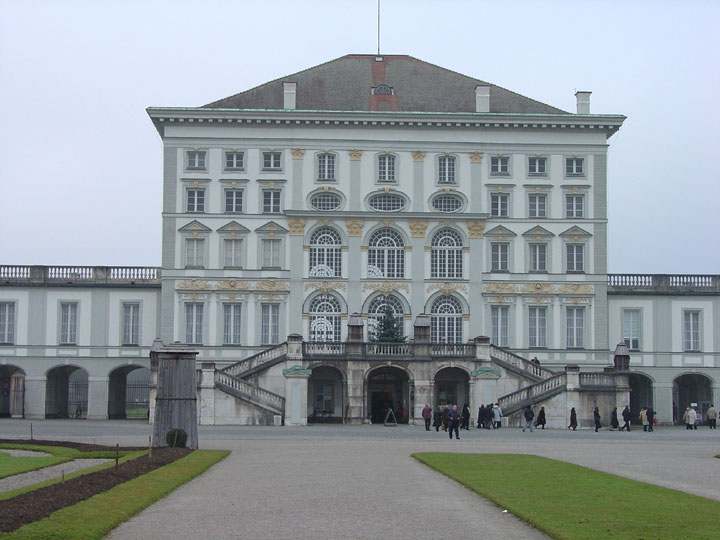
The renowned gardens were designed in 1701 by Carbonet, a pupil of Le Nôtre, who
had laid out the gardens of Versailles for Louis XIV. Distributed throughout the
garden are many late Baroque garden pavilions of note, including the Pagodenburg
(1716–19), the Badenburg (1718–21), and the Amalienburg (1734–39), whose
interior by François de Cuvilliés the Elder is one of the masterpieces of Rococo
decoration.
Palace Park
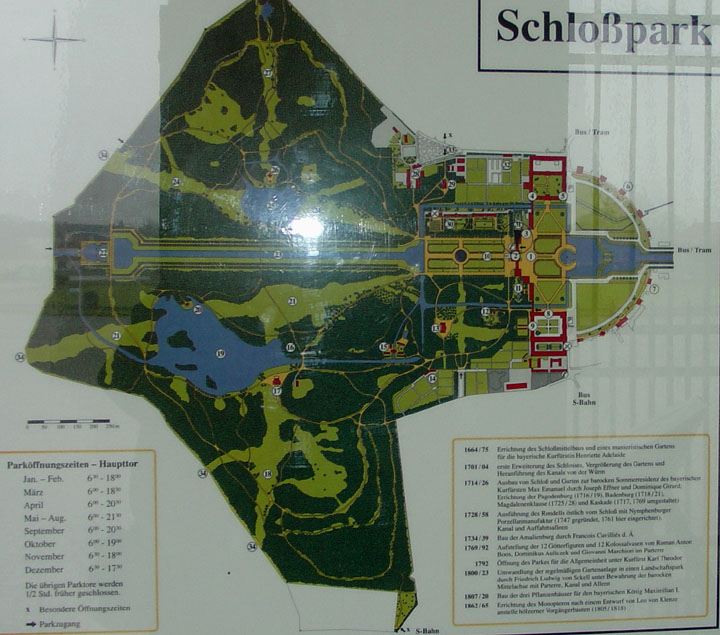
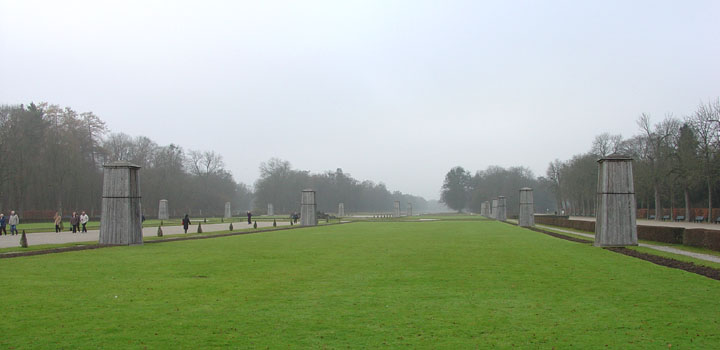
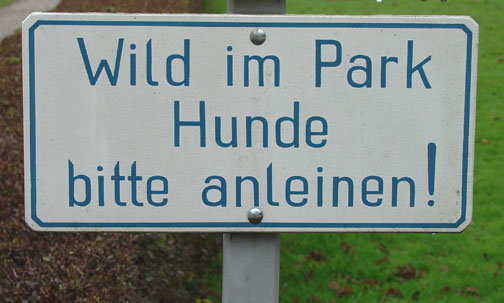
Keep your dog on a leash so as to
not
molest the natural inhabitants of the Schlosspark
Palace from the Park side
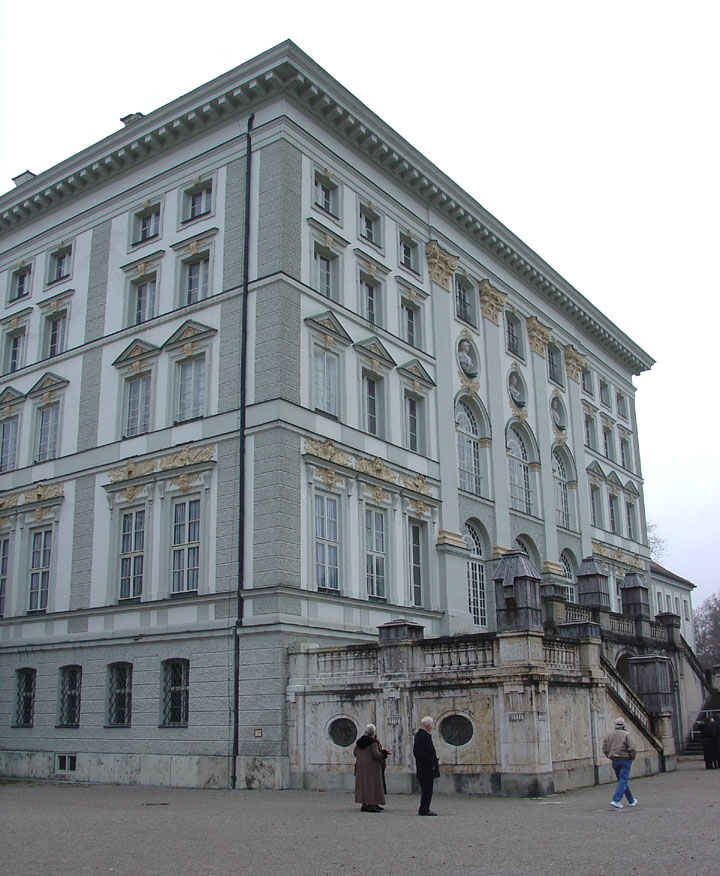
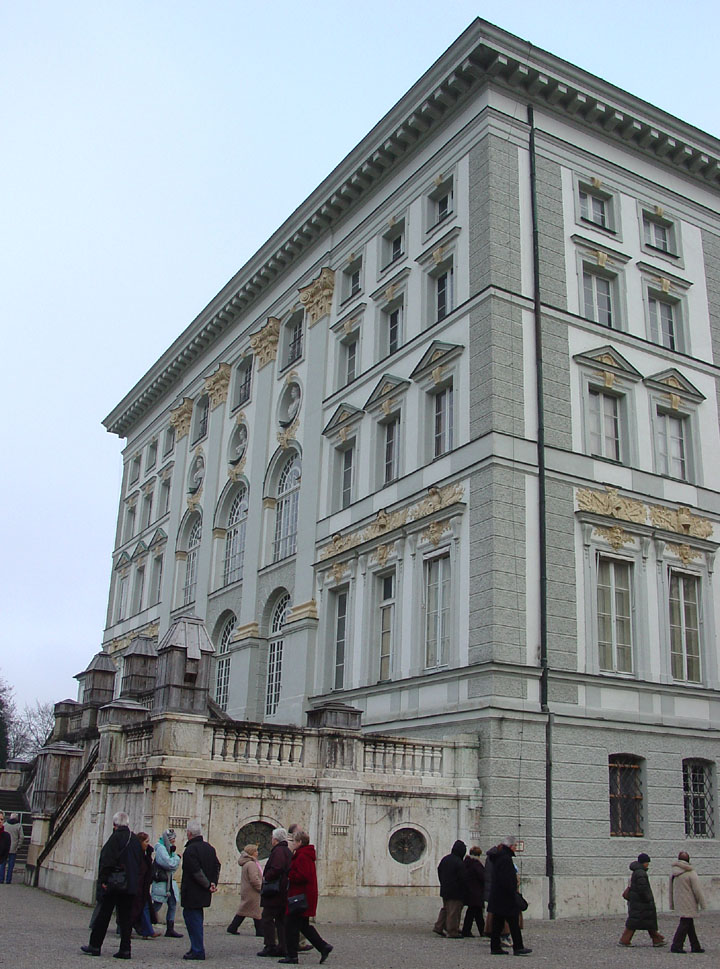
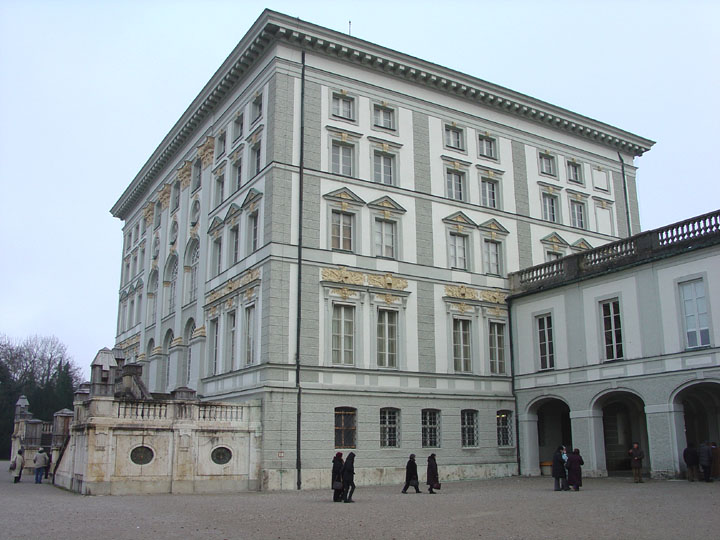
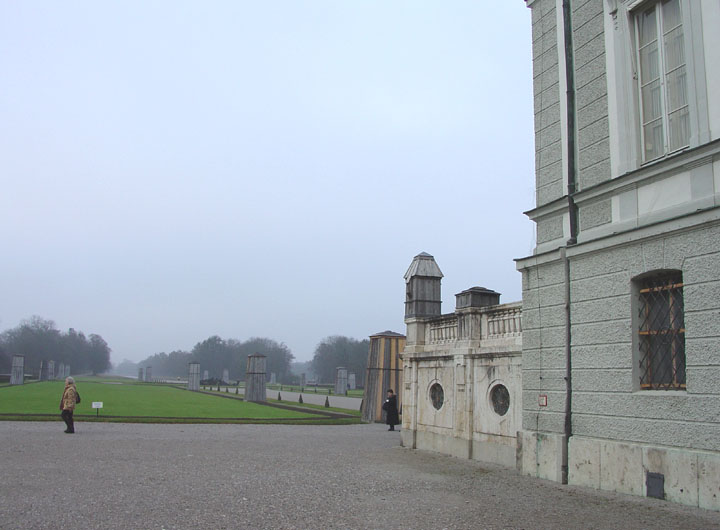
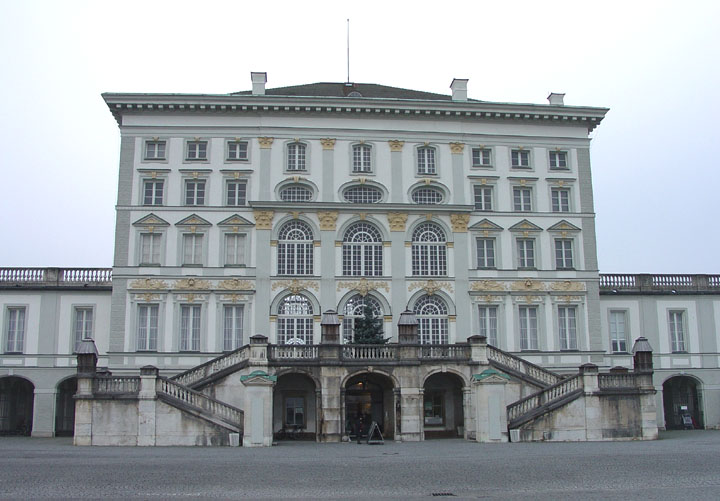
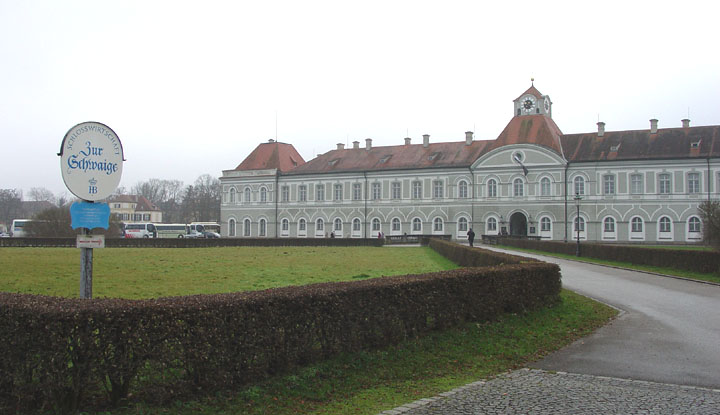
other wing